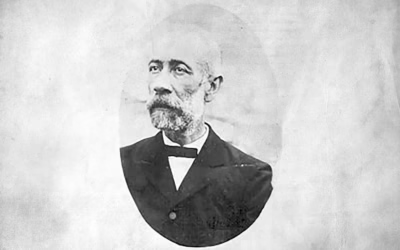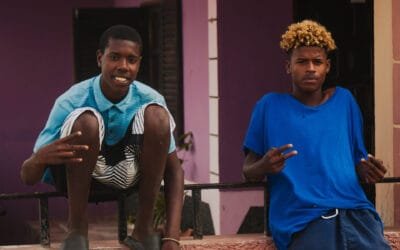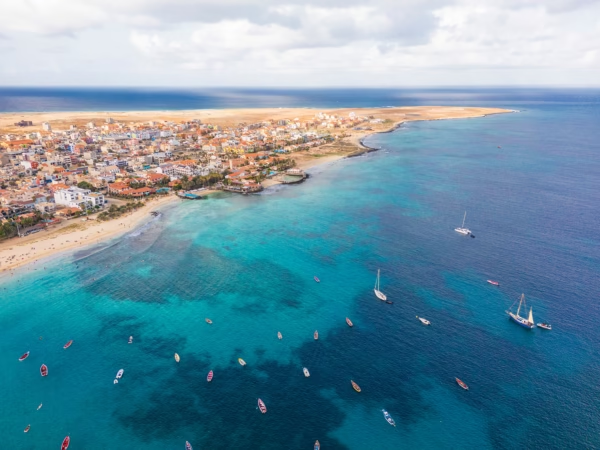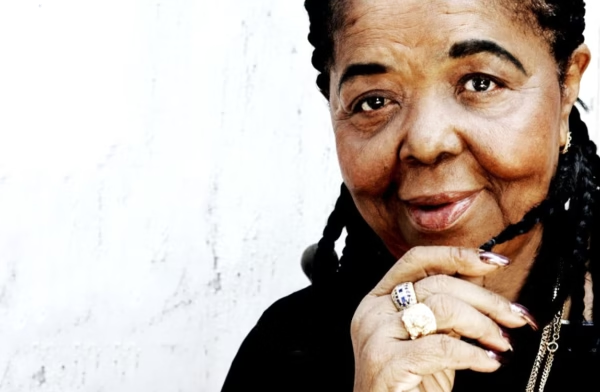Morabeza: The Unique Caboverdean Hospitality

In Cape Verdean Creole, morabeza refers to a deep-rooted culture of hospitality and friendly, relaxed warmth. At its simplest, locals define morabeza as the exceptional friendliness and casual, easygoing demeanour that Cape Verdeans exhibit towards others. Yet most will insist the term means far more than just hospitality. It’s often described as a way of life – an outlook embodying kindness, tranquillity, and genuine openness to people.
The Essence of Friendliness
Morabeza is frequently likened to other cultures’ untranslatable virtues. Mary Stolarski, writing from Cape Verde, notes that it is akin to the Hawaiian spirit of aloha – a gentle kindness and softer way of living. Others compare it to the famed Portuguese saudade (longing). But whereas saudade evokes nostalgia, morabeza celebrates presence – a cheerful generosity of spirit.
In a creative writing contest, Cape Verdean author Carla Gonçalves illustrated morabeza as “our essence… our friendliness and hospitality… what made us unique”. Her story imagines a future anthropologist discovering that morabeza once encapsulated everything distinctive about Cabo Verde. From its music, dance and cultural diversity to the simple warmth of its people.
In short, morabeza is the soul of Cabo Verdean culture, an “attitude towards life” reflecting a natural predisposition to welcome others with open arms.
”Morabeza is both a word and a concept, a lifestyle, a way of seeing and understanding things and life. It is not as well known to us as the elusive word “saudade”, made famous by the late, incomparable Cesaria Evora. Morabeza is more akin to the Hawaiian word and concept of aloha. Like aloha and the spirit it embodies, morabeza is about gentleness and kindness. A softer way of living and looking at life.”
– Mary, Cape Verde: The Spirit of Morabeza, KCRW
Historical Roots of Morabeza
The Origins
To understand the origins of morabeza, one must look at Cape Verde’s unique history. This archipelago was uninhabited until the mid-15th century, when Portuguese colonisers settled the islands and brought enslaved Africans, creating one of the first Creole societies. Life on the isolated isles was harsh. The colony faced recurrent droughts, famine, and neglect from Portugal.
Between 1747 and 1900, over 100,000 Cape Verdeans perished in periodic famines. In these conditions, “community solidarity was not just ideal; it was a matter of survival”. Cape Verdeans supported each other. They were sharing whatever they had, even if it was little. Over generations, this adversity and resilience gave rise to a cultural ethic of generosity and warmth.
“The legendary kindness of Cape Verdeans, forged by adversity and solidarity… is what the morabeza spirit is all about: human warmth as a response to history.” In other words, morabeza emerged as the collective antidote to hardship – an ethic of caring for one’s neighbour, because everyone knew the pain of hunger and loss.
Cultural Discovery
European visitors have long taken note of this distinctive Cape Verdean warmth. In 1938, travel writer Archibald Lyall was struck by the extraordinary mixture of people on São Vicente island – a cosmopolitan blend he found “as wonderful a mixture as can be found anywhere” – and by the easy sociability among them. Later scholars observe that São Vicente became known as the “cosmopolitan haven par excellence of morabeza,” symbolising the islands’ proud fusion of cultures.
Racial Democracy
By the early 20th century, a native Cape Verdean intelligentsia was embracing a concept referred to as “creole identity”. He described the archipelago’s character in terms of cordiality, tolerance, and the blending of races. A concept that Brazilian writers called “racial democracy”. This cultivated self-image of a gentle, mixed people fed into the idea of morabeza as a national ideal. Cape Verdean anthropologist Manuel Brito-Semedo explains that morabeza became part of the narrative of Cabo Verde’s identity. An inherent openness is said to stem from its multi-ethnic heritage and centuries of intercultural exchange. It’s a notion related to Portugal’s lusotropicalist idea of benign colonialism.
The Role of Morabeza Records
Morabeza also played a significant role in the story of independence. During the struggle against Portuguese rule in the 1960s and 1970s, Cape Verdean culture evolved into a form of resistance. A great example is Morabeza Records, a music label founded in 1965 by Cape Verdean migrants in Rotterdam. The label’s very name signalled its mission: to preserve and project Cape Verde’s identity. Djunga di Biluca, the founder (one of the first wave of Cape Verdean seamen in Europe), established the label with encouragement from nationalist leader Amílcar Cabral. “Morabeza was a political project,” recalls sociologist César Monteiro. Cabral himself had suggested using music as a tool of cultural resistance.
Cultural Resistance
The record label documented Cape Verdean songs (morna, coladeira, funaná) at a time when the Portuguese regime dismissed colonial art as mere folklore. By giving those songs a platform, Morabeza Records affirmed the people’s identity and dignity. Monteiro notes the label “was an expression of the identity claims of the Cape Verdean people,” driven more by pride than profit. In that era, even the word “morabeza” carried subversive weight. Simply displaying its emblem abroad could draw suspicion from Portugal’s secret police, who recognised it as a rallying symbol of Cape Verdean cultural nationalism.
Independence
Cape Verde won independence in 1975, and since then, morabeza has remained a touchstone of national life. The new nation, although tiny and resource-poor, took pride in its social cohesion and openness. Indeed, Cabo Verde soon gained a reputation as a model of African democracy and stability. Many credit the morabeza spirit – the ingrained habits of tolerance, community, and dialogue – for this success.
A Cape Verdean commentator, Mário Pina, argued that the “spontaneous cultural character” of Cape Verdeans is inherently democratic, a natural outgrowth of their mixed heritage and island upbringing. While this may be an idealised view, morabeza indeed became entwined with Cabo Verde’s post-colonial identity. The world saw a small country with “brandos costumes” (mild manners) and extraordinary hospitality, which bolstered its image on the global stage. At the same time, this ideal is sometimes overshadowed by internal challenges. But it’s a point we revisit later.
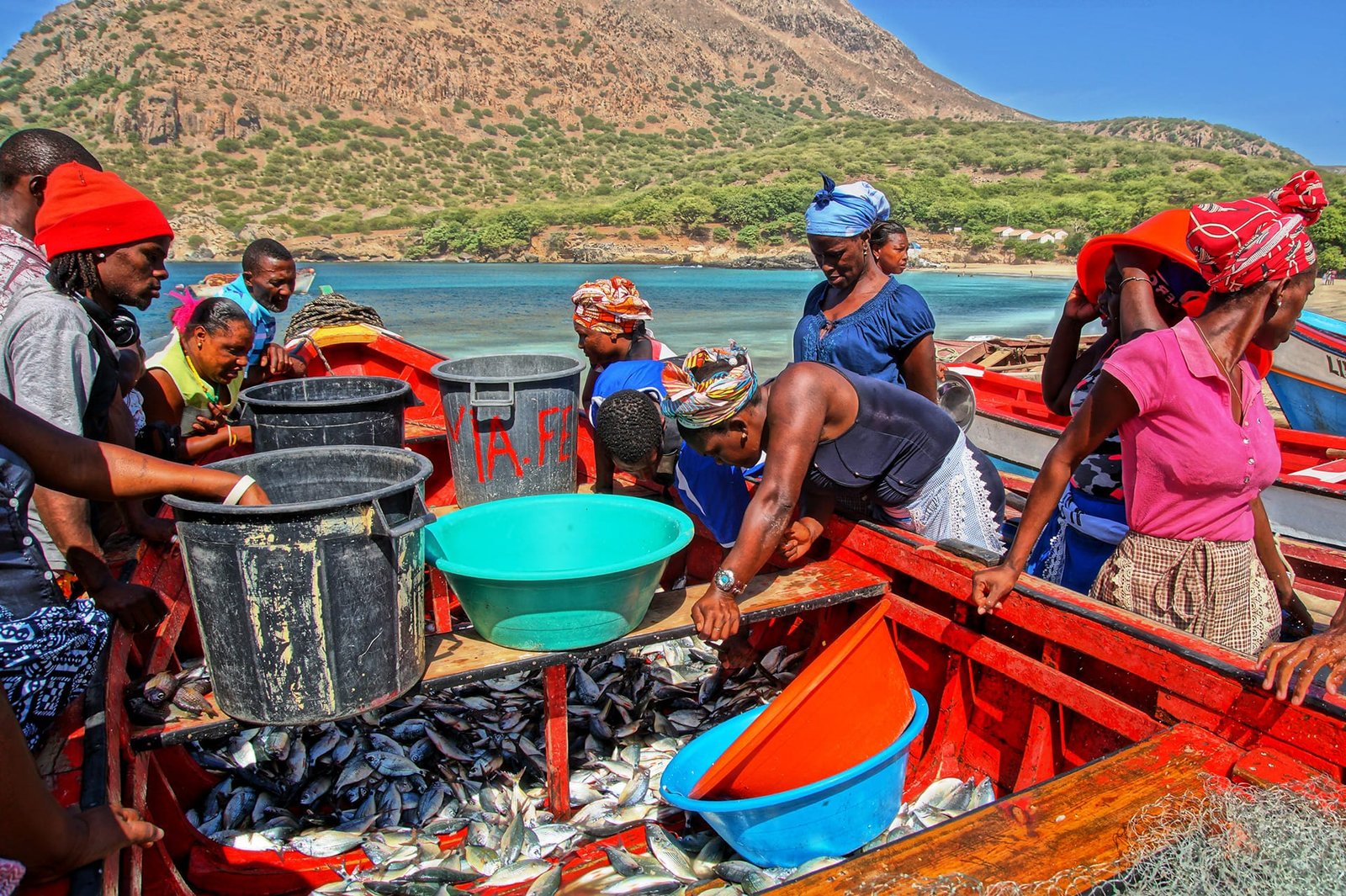
Morabeza in Everyday Life: “Sharing Whatever You Have”
Ask a Cape Verdean today what morabeza means, and you’ll likely hear a story. It might be as simple as always cooking a little extra food in case a neighbour or visitor stops by.
On the island of Santo Antão, two farmers epitomised this when they welcomed foreign hikers who happened upon their remote hamlet. The visitors found themselves seated on a porch, “listening to zouk music and sipping home-roasted coffee” while the hosts plucked fresh papayas and citrus from their trees to share.
One of the farmers, Adrienne, explained that “Morabeza is about sharing [our] lifestyle with visitors – showing what it means to live simply and with heart.” His friend Antonzinho added, “We don’t have money here in the mountains, but the important thing is heart, and we give that freely whenever we can.”.
This sentiment – generosity independent of wealth – is echoed across the islands. Cape Verdeans take genuine pleasure in making a stranger feel at home. As local guide Claudio put it, “All Cape Verdeans have morabeza… hospitality is a real pleasure [here].”
The Everyday Kindness
Hospitality in Cape Verde isn’t formal or showy. It’s an everyday kindness. An illustrative example comes from a small grogue (rum) distillery on Santo Antão. When travellers timidly knocked at the gate, the distiller laughed and waved them in without hesitation. He proudly gave a spontaneous tour, ladling out samples of sugarcane juice for his unannounced guests. “Morabeza,” he reflected, “is making extra when you cook, so there’s enough to share with neighbours. Or children knowing that if they get thirsty on their way home from school, they can always drop by for a drink. Really, it’s just about sharing whatever you have”.
This open-door ethos – the assurance that anyone in the community will help if they can – is instilled from childhood. Children grow up experiencing collective caregiving; a kid who falls on the street might be scooped up and comforted by the nearest adult, whether family or not. Such day-to-day acts, unremarkable to locals, embody morabeza as “a way of seeing and understanding life”.
Greeting Rituals
Even the national greeting rituals exude morabeza’s warmth. Cape Verdeans meeting will often exchange multiple cheek kisses, a hug, or a hearty “Tudo dretu?” (“All good?” in Creole) and actually pause to hear the answer. There is a familial informality even among strangers. Travellers commonly remark that “the people were some of the friendliest I’ve met”, noting how islanders greet foreigners with an easy smile.
On Sal Island – one of the most touristy islands – visitors quickly see past the barren landscape once they encounter the locals. “The people, the morabeza and the vibe on the island will make you fall in love with the place,” one travel writer observes. Sal’s towns, like Santa Maria, retain a close-knit feel despite resort developments. Fishermen still sell their dawn catch at the pier, chatting with passersby; grandmothers beckon curious tourists to taste home-cooked cachupa stew. That unforced personal touch leaves a lasting impression. As a tourism slogan neatly puts it, “Feel the morabeza… a unique concept that can only be felt in Cabo Verde”.
Brothers and Sisters
Yet, locals insist morabeza is not merely for show. It’s who they are. The concept encompasses more than gracious hosting; it’s tied to community values of respect, modesty, and living calmly. Cape Verdeans often describe themselves as a “people of morabeza”, meaning they prize a calm, friendly coexistence. In practice, this can mean doors left open, unannounced visits welcomed, and a general attitude that life is to be taken easy rather than hurried. It also entails a degree of cachêro (Creole for “camaraderie”) where everyone is an irmão or irmã (brother, sister).
True Capeverdean Identity
On small islands, this is especially pronounced: it’s said on Brava or Maio, no one is a stranger for long. Anthropologists note that this ideal of harmonious social life became a cornerstone of Cape Verdean identity during the 20th century.
The flip side is that anyone who disrupts community harmony, by rudeness or crime, is seen as violating something sacred. The strength of the morabeza norm, while mostly positive, can exert social pressure to conform to polite, communal behaviour. However, for the vast majority who embrace it, morabeza simply enriches Cape Verdean daily life with human connection and conviviality.
As one folk proverb sums up: “No dia di festa, ken ten, ten; ken ka ten, toma” – “On feast days, whoever has, gives; whoever doesn’t, receives.” That unwritten social contract is morabeza in a nutshell.
In Search of the Meaning of Morabeza
In March 2012, a creative writing competition promoted by the young Cape Verdean journalist Odair Varela on his blog, Crioulo n’Descontra, was launched to “promote a taste for writing and for linguistic and artistic evolution”. He got many responses.
Entry written by Carla Gonçalves beautifully describes the meaning of Caboverdean morabeza. Carla Gonçalves told a story of an anthropologist and researcher who, in 2090, finds the book ‘A Morabeza das Ilhas Crioulas’ (The Morabeza of the Creole Islands), causing him to search for the meaning of morabeza.
”Nho Chico spoke to him in broken English: Morabeza meant our essence, our music, our desires. Morabeza meant our Creole women, each one different from the others, all unique. Morabeza meant our beaches covered in black and white sands, our strong, imposing mountains, our friendliness and hospitality. Morabeza meant flowers, cultural diversity, dance. Morabeza was what distinguished us, what made us unique.”
Morabeza in Music, Literature and Lore
Cape Verde’s artists and writers have long celebrated morabeza, weaving it into songs, poems and stories. Music, in particular, is the soul of these isles. And through it, morabeza finds lyrical expression.
Cesária Évora
The late Cesária Évora, Cabo Verde’s most acclaimed singer, embodied morabeza both on and off stage. Known as the “Barefoot Diva” from Mindelo, Cesária was famous for her mournful mornas about sodade (longing). But she also recorded an upbeat song titled “Morabeza” on her 1992 album Miss Perfumado. In it, she extols the gentle charm of her islands. This track – and her habit of performing barefoot in humble solidarity with people experiencing poverty – solidified Cesária as a symbol of Cabo Verdean warmth.
As her contemporaries noted, Cesária’s very presence exuded morabeza: she would invite audiences into her emotional world, then share grogue and cachupa with fans after concerts as if they were old friends.
Identity and Music
Generations of musicians continue to invoke morabeza. In the Cape Verdean diaspora, Boy Gê Mendes (of the seminal band Voz de Cabo Verde) released an album titled Noite de Morabeza (“Night of Morabeza”), celebrating the convivial nights of music and togetherness in Cape Verdean communities abroad. More recently, young singers like Elida Almeida have carried the torch. Elida, born after independence, fuses traditional rhythms with pop; her song “Morabeza” (2017) pays homage to the openhearted spirit she inherited.
Even in instrumental tracks or in the joyful beats of funaná dance music, Cape Verdean artists say they are channelling morabeza – that sense of joyful belonging and emotional warmth that infuses their sound.
A local saying goes, “Nos gente é morabeza; nos música é morabeza,” meaning “Our people are morabeza; our music is morabeza.” The late poet and former President Baltasar Lopes da Silva (writing as Osvaldo Alcântara) hinted at this unity of people and spirit in verse, describing Cape Verde as “terra de morabeza” – a land of hospitable embrace.
Morabeza in Literature
In literature, morabeza also makes appearances both overt and subtle. One of the earliest mentions was in a short story titled “Morabeza” by Portuguese writer Manuel Ferreira, who lived in Cape Verde in the 1940s. Ferreira depicted scenes of daily kindness and mixed-race camaraderie, trying to capture the indefinable amenity he sensed. More recently, Cape Verdean writers have reflected on morabeza with pride and a touch of nostalgia.
The Carla Gonçalves story cited earlier is one example – she poignantly lists everything morabeza encompassed (from “our Creole women… our friendliness and hospitality” to “our cultural diversity, [our] dance”) and imagines it fading away. Her fictional warning underscores a genuine concern: that globalisation and time could erode the old ways of open living. It’s a theme in other works too – for instance, novelist Germano Almeida often contrasts the neighbourly warmth of traditional island life with the colder impersonal tone of modern city living. So far, though, those fears seem premature, as morabeza remains a point of pride.
In 2020, Cape Verdean author Joaquim Arena wrote that morabeza is “our most precious cultural heritage – an inheritance of generosity” that survives in each generation’s customs, even if styles of socialising change.
Cultural Importance
Whether in Kriolu novels or poems set to music, morabeza continues to be portrayed as Cabo Verde’s intangible treasure – a gentle light guiding its people.
Morabeza’s influence extends beyond the arts into public discourse. Cape Verdean scholars and commentators frequently invoke it when describing national character. For example, historian Leopoldo Amado notes that despite centuries of poverty, Cabo Verde developed a “culture of conviviality” – a people-oriented humanism – which he equates with morabeza. Sociologist Pedro Cardoso has written that “Cape Verde is defined not by material wealth but by the wealth of morabeza in its society.” Such statements resonate with many Cape Verdeans who view their culture’s warmth as its greatest asset.
Morabeza Abroad
Over the past century, more Cape Verdeans have lived abroad than at home. An estimated million-plus of Cabo Verdean descent reside in New England (USA), Portugal, the Netherlands, West Africa and beyond. Compared to about 500,000 in the islands. Remarkably, they took their unique culture with them. In immigrant enclaves like Boston, Rotterdam, Lisbon, or Paris, Cape Verdean families recreated the close-knit social life they were familiar with. They’re often turning neighbourhoods into “little Cabo Verdes”, marked by a strong sense of hospitality. Community clubs and cafés sprang up as gathering places. One famous example: the Morabeza Club in Rotterdam in the 1970s, named after the record label, which doubled as a cultural centre for newcomers.
Hospitality and Support
These diaspora communities became known for their welcoming atmosphere. Longtime residents would help newly arrived compatriots find jobs and housing, essentially extending morabeza as a support network in foreign lands. During Cape Verde’s independence struggles, diaspora leaders tried to leverage this unity to aid the cause as well as they could, coordinating relief for droughts and rallying political support, all in the spirit of collective care.
Cape Verdeans from New Bedford
Today, second- and third-generation Cape Verdeans abroad still proudly uphold their traditions. Candida Rose, a Cape Verdean-American singer in New Bedford, Massachusetts, describes it this way:
“We have this word in our culture called morabeza. We bring the warmth and love of not only our country and our people, but we bring that no matter where we go.”.
She notes that Cape Verdeans instinctively form community enclaves and then reach out beyond them:
“We [want] to help whatever communities we’re in… it didn’t just stay in [our] enclaves.”
In places like New Bedford – home to one of the oldest CV diasporas, dating to whaling days – this has meant Cape Verdeans becoming beloved contributors to civic life, known for their joyous festivals and neighbourly spirit. In July 2025, New Bedford even inaugurated an annual Cabo Verdean Heritage Month, where morabeza was a central theme. Cape Verdean-Americans raised the archipelago’s flag and spoke of sharing the warmth of morabeza with their city. It was an affirmation that, 50 years post-independence, the diaspora still lives and breathes their traditions.
Living Tradition
Among younger generations, morabeza is evolving but not disappearing. Youth in Praia or Mindelo today may socialise at cafes or via WhatsApp more than on the front stoop. Yet the core values of openness and community endure. In urban Praia, for instance, young people have formed neighbourhood associations that organise block parties, beach clean-ups, and crowdfunding for families in need. All of this visibly reflects Morabeza’s ethos of communal care. Just updated for modern times.
Away from the Archipelago
In the diaspora, young Cape Verdeans often grow up hearing their elders teach, “Morabeza é nossa maneira” (“Morabeza is our way”). Many embrace this heritage: they start Cape Verdean student clubs, cultural festivals, and morabeza-themed businesses, from restaurants to travel companies.
Some do struggle with a dual identity, balancing the individualism of their birth countries with the communalism of their parents’ culture. However, events like Cape Verdean Independence Day festivals, held each July, are full of music, food, and fellowship, providing the youth with a direct experience of morabeza. As one Rotterdam-born DJ observed:
“When I first visited Santiago [island], I finally felt what morabeza meant – now I try to put that feeling into my music mixes for other kids like me.”
In that way, the essence of Cape Verdean identity is being reinterpreted through new art forms and media. Still, its heart–warmth, generosity, morri di sodade (“sweet nostalgia” for community) – beats on.
In short and most common meaning, Morabeza is a word from Cape Verdean Creole used to express the traditional Cape Verdean hospitality, as realised by their exceptional friendliness and casual, relaxed behaviour.
However, it may mean a great deal more to Cabo Verdeans themselves. Many will tell you that Morabeza means much more than their hospitality. It’s also the music and dance, positive and calm lifestyle, cultural diversity, the beauty and general vibe of the sand, the ocean, the sky – all of which create the essence of being a true Caboverdean.
Morabeza and Tourism
In recent decades, morabeza has become a selling point for Cape Verde’s burgeoning tourism industry, for better and for worse. The country markets its famed hospitality, knowing it differentiates the islands as more than just another sun-and-sea destination. The national tourism board’s latest slogan is “Cape Verde – From the Heart”, launched in 2023 with a vibrant heart logo. The idea is to assure visitors that an authentic, heartfelt welcome awaits.
Tourism materials often invite travellers to “toast to morabeza” and be enveloped by the islands’ caring culture. This branding isn’t merely fluff – many visitors do report feeling sincerely welcomed. From the minute one arrives at the airport, the easy smiles and “Olá, benvindo!” set a tone. Resorts on Sal and Boa Vista train staff to uphold morabeza, encouraging personal interaction and local touches. Like teaching guests Creole phrases or cooking cachupa together.
Tellingly, the very first resort hotel in Cape Verde, opened on Sal in 1967 by a Belgian family, was named Hotel Morabeza. Decades later, it remains a beloved institution, renowned for its friendly Cape Verdean staff — a testament to the enduring importance of the concept in the tourism experience.
Commodification Question
However, the promotion of morabeza as a commodity has raised some local eyebrows. Some Cape Verdeans worry that packaging their genuine culture into a tourism buzzword might dilute its meaning. As tourism expands (nearly half of all hotel beds in the country are now on Sal), the concern is whether culture can survive mass commercialisation.
On Sal’s Santa Maria beach, where all-inclusive resorts line the shore, one can see the contrast. Beyond the hotel gates, local fishermen still chat and joke in the old relaxed way, but inside, the once-natural friendliness sometimes becomes a scripted greeting for visitors.
A sustainable tourism advocate observed that the rapid resort development “has lost some of [the island’s] character,” even as visitors still seek the authentic contact that morabeza promises.
The National Brand
Local scholars have put a critical lens on this dynamic. Anthropologist Peter Zoettl argues that morabeza has been co-opted into an “ideological fantasy” of Cape Verde as an ever-tranquil, harmonious paradise. This idealised image, he notes, is heavily promoted by authorities – not only to tourists but to international donors – to bolster Cape Verde’s reputation as a stable, friendly, model nation. Morabeza, in this sense, becomes part of a national brand that officials deploy to attract aid, investment and positive press.
“The concept and label of morabeza [recommend] the country and its leaders to the sponsorship of international partners,”
Zoettl writes, noting European Union documents praise Cape Verde’s social harmony and low corruption, partially crediting cultural traits. While largely accurate, this narrative can gloss over real social issues like inequality, youth unemployment, and rising crime in urban centres.
Risks
Some critics dub it the “morabeza myth” – a narrative that Cape Verdeans are inherently gentle and peaceable, which risks downplaying problems or excusing authorities when those values aren’t upheld. Sociologist Miguel de Almeida points out that colonial-era tropes of lusotropicalism (the idea of uniquely benign Portuguese colonies) have subtly morphed into today’s morabeza discourse, painting Cape Verde as exceptional in ways that can be self-congratulatory.
The Need for Balance
To be clear, none of this negates the reality of morabeza – it is indeed a lived cultural value – but it suggests a need for balance. Cape Verdeans themselves are protective of morabeza’s authenticity. Many locals express pride that tourists feel welcomed, but they also want tourism to respect their culture rather than exploit it.
When large resorts import foreign management or isolate guests from local life, Cape Verdeans often lament that “this is not morabeza”. In contrast, community-based tourism initiatives, like homestays and village tours, tend to flourish because they tap into genuine hospitality. On Santo Antão, for example, villagers host trekkers in their simple homes, offer home-cooked meals and music jams – experiences money can’t buy, except now it indirectly sustains those communities. That is the genuine culture turned into a sustainable asset.
Authenticity Above Commercialism
The commodification debate thus revolves around ensuring morabeza remains a sincere cultural exchange, not a canned performance. Cape Verde’s government appears aware of the tightrope. The new tourism brand emphasises “authenticity” and involves local families in tourism’s value chain. It’s essentially selling morabeza by ensuring it’s real, encouraging visitors to venture into towns and meet people. Time will tell how this balance holds as visitor numbers climb.
For now, the commodification of morabeza is a nuanced issue: on one hand, it helps differentiate and add value to Cape Verde’s tourism; on the other, it challenges the country to live up to its otherished ideal in the face of rapid change. And if morabeza teaches anything, it’s that change, too, can be met with Cape Verdean grace – devagar (slowly), and sempre com coração (always with heart).
The Future of Morabeza
As Cape Verde navigates the 21st century – balancing development and tradition, local life and global ties – morabeza remains its North Star, more or less. This humble concept, born of a unique history, continues to bind Cape Verdeans together across islands and continents. It is lived out in daily acts of kindness.
Morabeza has proven to be adaptable: whether in a remote mountain village, a bustling Praia neighbourhood, or a Cape Verdean block party in Boston, its essence endures in how people treat one another. Younger generations are inheriting a proud legacy of openness and giving. Even as they reinterpret it for modern times. And visitors who experience Cape Verde often leave not just with sunburns and souvenirs, but with a resonant feeling. A warm sense of human connection that is hard to forget.
In the words of a Cape Verdean proverb, “Kel ki ten, e partilha; kel ki ka ten, e kontenti” – “Whoever has, shares; whoever doesn’t, is content.” This ethic of generosity and contentment, honed over centuries, is the heart of morabeza. Far more than a word, it is Cape Verde’s gift to itself and the world: a welcoming embrace of life and each other.
Bibliography
- Imogen Lepere, The Independent – Discovering ‘morabeza’ in the mountains of Santo Antão (Mar 31 2022);
- CapeandIslands.org – Interview with Candida Rose Baptista (Jul 1 2025);
- Portugal Pulse – Morabeza documented the culture of Cape Verde before independence. (Jul 9, 2025);
- Peter Zoettl – Morabeza, cash or body: prison, violence and the state in Praia, Int. Journal of Cultural Studies;
- OpenEdition (Civilisations) – Subverting the morabeza fantasy: Rabidantis… (2021) by Marzia Grassi;
- Casa di Cabo Verde – History of Cape Verdean People: Traditions and Culture (n.d.);
- FairTourism.nl – Cape Verde: a story from the no stress archipelago by Kim de Leeuw (2019);
- Água de Cabo Verde Blog – The Morabeza of Cape Verde: A Welcoming Embrace… (Jun 14, 2024);
- Morabeza on Wikipedia, the Free Encyclopedia;
- Cape Verde: The Spirit of Morabeza by Mary(Apr 8, 2014), KCRW Music News;
- Cape Verde: Encouraging Storytelling and Creative Writing by Sara Moreira, translated to English by Georgi McCarthy in 2012, published in Global Voices;

